
The cryosphere is an all-encompassing term for those portions of Earth's surface where water is in solid form, including sea ice, lake ice, river ice, snow cover, glaciers, ice caps, ice sheets, and frozen ground. Thus, there is a wide overlap with the hydrosphere. The cryosphere is an integral part of the global climate system with important linkages and feedbacks generated through its influence on surface energy and moisture fluxes, clouds, precipitation, hydrology, atmospheric and oceanic circulation. Through these feedback processes, the cryosphere plays a significant role in the global climate and in climate model response to global changes. Approximately 10% of the Earth's surface is covered by ice, but this is rapidly decreasing. The term deglaciation describes the retreat of cryospheric features. Cryology is the study of cryospheres.

The climate of Antarctica is the coldest on Earth. The continent is also extremely dry, averaging 166 mm (6.5 in) of precipitation per year. Snow rarely melts on most parts of the continent, and, after being compressed, becomes the glacier ice that makes up the ice sheet. Weather fronts rarely penetrate far into the continent, because of the katabatic winds. Most of Antarctica has an ice-cap climate with very cold, generally extremely dry weather.
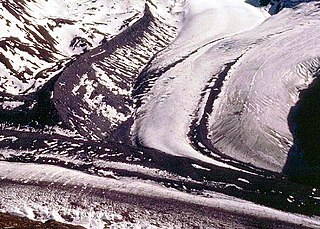
Glaciology is the scientific study of glaciers, or more generally ice and natural phenomena that involve ice.

The Ross Ice Shelf is the largest ice shelf of Antarctica. It is several hundred metres thick. The nearly vertical ice front to the open sea is more than 600 kilometres (370 mi) long, and between 15 and 50 metres high above the water surface. Ninety percent of the floating ice, however, is below the water surface.
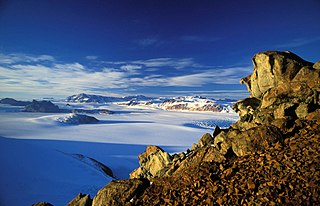
The Transantarctic Mountains comprise a mountain range of uplifted rock in Antarctica which extend, with some interruptions, across the continent from Cape Adare in northern Victoria Land to Coats Land. These mountains divide East Antarctica and West Antarctica. They include a number of separately named mountain groups, which are often again subdivided into smaller ranges.
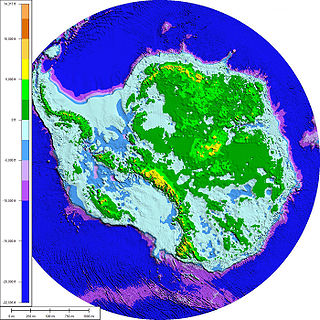
The Western Antarctic Ice Sheet (WAIS) is the segment of the continental ice sheet that covers West Antarctica, the portion of Antarctica on the side of the Transantarctic Mountains that lies in the Western Hemisphere. The WAIS is classified as a marine-based ice sheet, meaning that its bed lies well below sea level and its edges flow into floating ice shelves. The WAIS is bounded by the Ross Ice Shelf, the Ronne Ice Shelf, and outlet glaciers that drain into the Amundsen Sea.

The International Glaciological Society (IGS) was founded in 1936 to provide a focus for individuals interested in glaciology, practical and scientific aspects of snow and ice. It was originally known as the 'Association for the Study of Snow and Ice'. The name was changed to the 'British Glaciological Society in 1945. With more and more non-British glaciologists attending its 'readings' and submitting papers for publication, the name was changed to the 'Glaciological Society' in 1962 and finally the Society acquired its present name in 1971. The IGS publishes the Journal of Glaciology, Annals of Glaciology and ICE, the news bulletin of the IGS. The Journal of Glaciology won the ALPSP/Charlesworth Award for the Best Learned Journal of 2007.

Pine Island Glacier (PIG) is a large ice stream, and the fastest melting glacier in Antarctica, responsible for about 25% of Antarctica's ice loss. The glacier ice streams flow west-northwest along the south side of the Hudson Mountains into Pine Island Bay, Amundsen Sea, Antarctica. It was mapped by the United States Geological Survey (USGS) from surveys and United States Navy (USN) air photos, 1960–66, and named by the Advisory Committee on Antarctic Names (US-ACAN) in association with Pine Island Bay.

Thwaites Glacier, sometimes referred to as the Doomsday Glacier, is an unusually broad and vast Antarctic glacier flowing into Pine Island Bay, part of the Amundsen Sea, east of Mount Murphy, on the Walgreen Coast of Marie Byrd Land. Its surface speeds exceed 2 kilometres per year near its grounding line. Its fastest flowing grounded ice is centered between 50 and 100 kilometres east of Mount Murphy. In 1967, the Advisory Committee on Antarctic Names named the glacier after Fredrik T. Thwaites (1883–1961), a glacial geologist, geomorphologist and professor emeritus at the University of Wisconsin–Madison. The historian Reuben Gold Thwaites was his father.
Whillans Ice Stream is a glaciological feature of the West Antarctic Ice Sheet, formerly known as Ice Stream B, renamed in 2001 in honor of Ohio State University glaciologist Ian Whillans.

Totten Glacier is a large glacier draining a major portion of the East Antarctic Ice Sheet, through the Budd Coast of Wilkes Land in the Australian Antarctic Territory. The catchment drained by the glacier is estimated at 538,000 km2 (208,000 sq mi), extending approximately 1,100 km (680 mi) into the interior and holds the potential to raise sea level by at least 3.5 m (11 ft). Totten drains northeastward from the continental ice but turns northwestward at the coast where it terminates in a prominent tongue close east of Cape Waldron. It was first delineated from aerial photographs taken by USN Operation Highjump (1946–47), and named by Advisory Committee on Antarctic Names (US-ACAN) for George M. Totten, midshipman on USS Vincennes of the United States Exploring Expedition (1838–42), who assisted Lieutenant Charles Wilkes with correction of the survey data obtained by the expedition.

Ice sheet dynamics describe the motion within large bodies of ice, such those currently on Greenland and Antarctica. Ice motion is dominated by the movement of glaciers, whose gravity-driven activity is controlled by two main variable factors: the temperature and the strength of their bases. A number of processes alter these two factors, resulting in cyclic surges of activity interspersed with longer periods of inactivity, on both hourly and centennial time scales. Ice-sheet dynamics are of interest in modelling future sea level rise.
Elizabeth Mary Morris,, also known as Liz Morris, is a glaciologist and Senior Associate at the Scott Polar Research Institute, University of Cambridge. She has been a visiting professor at the University of Reading since 1995. She was head of the ice and climate division at the British Antarctic Survey, from 1986 to 1999, and president of the International Glaciological Society, from 2002 to 2005.
Eric William Wolff, FRS is a British climatologist, glaciologist, and academic. Since 2013, he has been Royal Society Research Professor of Earth Sciences at the University of Cambridge.

Christina Riesselman is an American paleoceanographer whose research focus is on Southern Ocean response to changing climate.
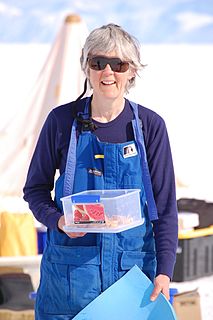
Patricia Jean Langhorne is an Antarctic sea ice researcher. She retired as Professor in the physics department at the University of Otago, New Zealand in 2020. She was previously head of department (2012–2015). She was New Zealand's leading sea ice physicist. For a time she led the observational component of one of New Zealand’s National Science Challenges – the Deep South.
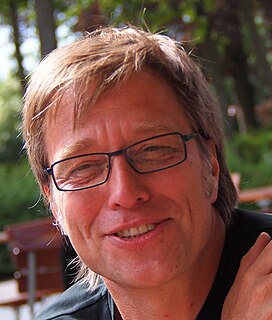
Frank Jean-Marie Léon Pattyn is a Belgian glaciologist and professor at the Université libre de Bruxelles. He is best known for developing ice-sheet models and leading model intercomparisons.

Natalie Robinson, an Antarctic researcher, is based at the National Institute of Water and Atmospheric Research in New Zealand. She led the final two K131 Science Events on the sea ice of McMurdo Sound, Antarctica.
Kirsteen Jane Tinto is a glaciologist known for her research on the behavior of the Greenland and Antarctic ice sheets.

Robert McKay is a paleoceanographer who specialises in sedimentology, stratigraphy and palaeoclimatology, specifically gathering geological evidence to study how marine-based portions of the Antarctic ice sheet behave in response to abrupt climate and oceanic change. He has been involved in examination of marine sedimentary records and glacial deposits to show melting and cooling in Antarctica over the past 65 million years and how this has influenced global sea levels and climate. This has helped climate change scientists overcome uncertainty about how the ice sheets will respond to global warming and how this can be managed effectively in the 21st century. He has participated in international projects including ANDRILL and the International Ocean Discovery Program (IODP), led major New Zealand government-funded research teams and has received several awards in recognition of his work. Since 2012 McKay has been an Associate Professor at Victoria University of Wellington and from 2019, Director of the Antarctic Research Centre.
















